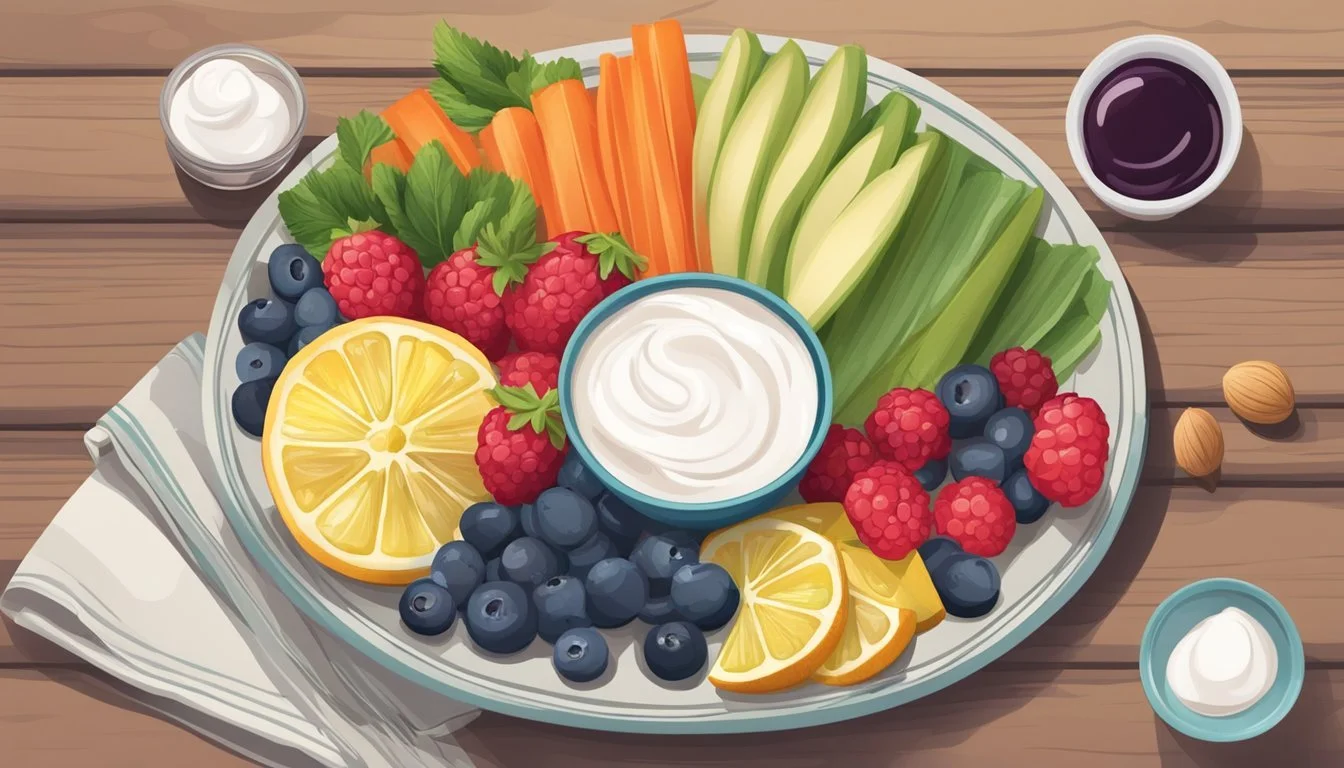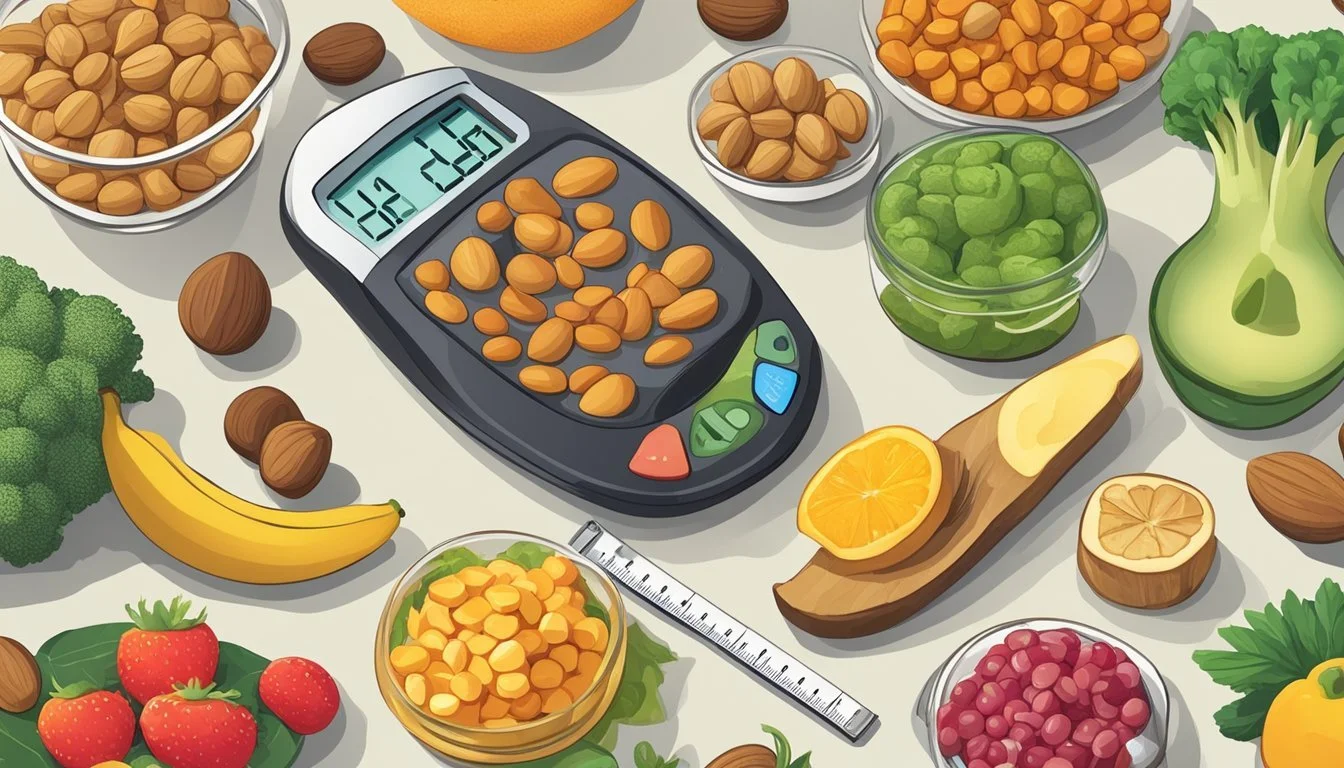5 Satisfying Snacks That Won't Spike Your Glucose Levels
Healthy Choices for Steady Energy
Maintaining stable glucose levels is crucial for those with diabetes or anyone looking to manage their blood sugar effectively. Choosing the right snacks can make a significant difference in avoiding spikes and keeping energy levels balanced. By focusing on snacks that combine protein, healthy fats, and fiber, individuals can enjoy delicious and satisfying options that won't disrupt their glucose levels.
When blood sugar levels fluctuate, it can lead to various health issues and discomfort. This article introduces five snacks designed to prevent sharp increases in blood sugar, providing both nutritional benefits and peace of mind. Making informed choices about what to eat between meals helps maintain steady glucose levels and promotes overall well-being.
1) Almond Butter with Celery Sticks
Almond butter with celery sticks offers a perfect blend of crunchy and creamy textures. This combination is not only satisfying but also low in calories, making it an ideal snack for those monitoring their blood sugar levels.
Celery is a low-carb vegetable rich in fiber, which helps slow down the absorption of sugar into the bloodstream. This fiber content aids in maintaining stable glucose levels, an important factor for people with diabetes.
Almond butter adds healthy fats and protein to the snack. These nutrients further support stable blood sugar levels by providing a slow, sustained release of energy. With approximately 100-150 calories per serving, depending on the amount of almond butter used, it’s a guilt-free option.
This snack is easy to prepare. Simply wash and trim the celery, then spread a moderate amount of almond butter into the celery grooves. This straightforward process makes it convenient for those with busy schedules.
Overall, almond butter with celery sticks is a nutritious, delicious, and diabetes-friendly choice. It's an excellent option to keep hunger at bay while managing blood sugar levels effectively.
2) Greek Yogurt with Berries
Greek yogurt combined with fresh berries provides a wholesome snack option. Plain Greek yogurt is rich in protein and contains probiotics, which support digestive health.
Adding a handful of berries such as strawberries, blueberries, or raspberries introduces natural sweetness without the need for added sugars. These fruits are low on the glycemic index, making them ideal for maintaining blood sugar levels.
The fiber found in berries also aids in digestion and helps in feeling full longer. This combination of protein, fiber, and healthy nutrients can make for a truly satisfying snack.
3) Hummus and Carrot Sticks
Hummus and carrot sticks create a nutritious and satisfying snack that won't spike glucose levels.
Hummus, made from chickpeas, olive oil, lemon juice, garlic, and cumin, is rich in protein and healthy fats. These nutrients help stabilize blood sugar. The fiber content in chickpeas also aids in slowing down carbohydrate absorption.
Carrots complement hummus perfectly. They provide crunch and are low on the Glycemic Index, making them a beneficial option for blood sugar management.
Peeling and cutting carrots into spears makes them easy to pair with hummus. This combination is simple to prepare and can be stored in the fridge for up to seven days. It's an ideal snack for those who are busy yet health-conscious.
For those looking to add more variety, other vegetables like celery or bell peppers can be used as well.
4) Chia Seed Pudding
Chia seed pudding is a delicious, nutritious snack tailored for those monitoring their glucose levels. Rich in fiber, protein, and healthy fats, chia seeds help stabilize blood sugar while keeping you satisfied.
Preparing chia seed pudding is simple. Mix chia seeds with a liquid like coconut milk, almond milk, or even water. Let the mixture sit for a few hours or overnight.
Flavor options are endless. You can add ingredients such as unsweetened cocoa powder for chocolate chia pudding or pureed mango for a tropical twist. Sweeten with stevia, monk fruit, or another sugar-free sweetener to keep it diabetic-friendly.
One serving typically contains low carbohydrates, making it ideal for diabetes management. For added texture and flavor, top your pudding with fresh low-glycemic fruits like berries or nuts.
This pudding not only tastes great but is an excellent source of omega-3 fatty acids. These essential fats support heart health, which is crucial for individuals with diabetes.
Incorporating chia seed pudding into your diet provides a versatile, satisfying treat that aligns with a balanced, diabetes-friendly eating plan.
5) Apple Slices with Peanut Butter
Apple slices paired with peanut butter are a perfect blend of crunch and creaminess. This snack is not only delicious but also nutrient-dense.
The natural sugars in apples are balanced by their high fiber content. This helps to prevent spikes in blood sugar levels, making it a smart choice for those monitoring their glucose.
Peanut butter adds a dose of healthy fats and protein. This combination can help in keeping you full and satisfied for longer periods.
Adding a sprinkle of cinnamon or a handful of nuts can enhance the flavor and nutritional value. Keep this simple yet wholesome snack handy for a quick, blood sugar-friendly option.
Understanding Glucose Levels
Accurately managing glucose levels is crucial for overall health, particularly for those with diabetes. This involves understanding what glucose levels are and why maintaining them is vital.
What Are Glucose Levels?
Glucose levels refer to the amount of glucose or sugar present in the blood.
Glucose is a primary energy source derived from carbohydrates consumed in the diet.
When people eat, their digestive systems break down carbohydrates into glucose, which is then absorbed into the bloodstream.
Normal blood glucose levels typically range from 70 to 99 mg/dL when fasting and up to 140 mg/dL after eating.
Glucose levels fluctuate throughout the day based on food intake, physical activity, and other factors.
Why Glucose Management is Important
Managing glucose levels is important to prevent significant health issues.
Uncontrolled high blood glucose can lead to hyperglycemia, causing damage to organs, nerves, and blood vessels.
Symptoms such as excessive thirst, frequent urination, and fatigue may occur.
Consistently high levels can result in complications like cardiovascular disease, nerve damage, and kidney failure.
Conversely, low blood glucose, or hypoglycemia, can cause dizziness, confusion, and, in severe cases, loss of consciousness.
Regular monitoring and balanced dietary choices are essential strategies for maintaining stable blood glucose levels.
Proper glucose management supports overall health and helps mitigate the risks of diabetes-related complications.
Nutritional Components of Satisfying Snacks
Choosing snacks that maintain blood sugar stability involves understanding key nutritional components. Focus on foods with a low glycemic index, high fiber content, and balanced amounts of healthy fats and protein.
Low Glycemic Index Foods
Low glycemic index (GI) foods cause a slower rise in blood sugar levels, preventing spikes. Snacks like whole grain crackers, fruits such as apples and berries, and vegetables like carrots or cucumbers fall into this category.
Whole grains offer sustained energy due to their complex carbohydrates. Fruits rich in fiber and vitamins provide natural sweetness without causing rapid blood sugar changes. Non-starchy vegetables are low in calories and carbs, making them ideal for keeping blood sugar levels steady.
High Fiber Content
High-fiber snacks promote satiety and gradual digestion, aiding in blood sugar control. Nuts and seeds are excellent sources of dietary fiber and healthy fats. Legumes, such as chickpeas and lentils, provide both soluble and insoluble fiber, which helps slow carbohydrate absorption.
Whole fruits, especially those with edible skins, deliver substantial fiber content. Vegetables like bell peppers, broccoli, and snap peas can be eaten raw for a fibrous snack. These snacks help regulate the digestive process, ensuring blood sugar levels remain balanced.
Healthy Fats and Protein
Healthy fats and protein are crucial for sustaining energy and managing hunger. Avocados and nuts, like almonds and walnuts, are rich in monounsaturated fats that support heart health and stabilize blood sugar. Greek yogurt and cheese provide protein and probiotics, which can enhance gut health.
Lean protein sources, such as turkey slices or hard-boiled eggs, are excellent for maintaining fullness without spiking glucose levels. Nut butters, when not loaded with added sugars, offer a balanced mix of protein and fats, perfect for pairing with fiber-rich snacks like apple slices or whole grain bread.
Lifestyle Tips for Stable Glucose Levels
Maintaining stable glucose levels involves regular exercise and mindful eating. These practices can significantly impact blood sugar management and contribute to overall well-being.
Regular Physical Activity
Engaging in regular physical activity encourages better glucose uptake by muscles and improves insulin sensitivity. Activities like walking, swimming, and cycling are effective.
Aiming for at least 150 minutes of moderate exercise weekly can help stabilize blood sugar levels.
Incorporate strength training exercises twice a week to build muscle mass, which aids in glucose regulation. Simple activities such as body-weight exercises or using resistance bands can be effective.
Consistency in physical activity is crucial. Finding enjoyable exercises ensures adherence, making it easier to integrate into daily routines.
Mindful Eating Practices
Mindful eating focuses on food choices and eating habits to stabilize glucose levels. Limiting high-glycemic foods and balancing meals with protein, fiber, and healthy fats is essential.
Including non-starchy vegetables, lean proteins, and whole grains supports steady glucose levels.
Portion control and eating at regular intervals prevent drastic blood sugar fluctuations. Small, frequent meals can help avoid spikes and crashes.
Avoiding sugary snacks and beverages is critical. Opt for snacks like nuts, seeds, and yogurt to satisfy hunger without affecting blood glucose significantly.
Chewing food thoroughly and eating slowly can aid digestion and improve satiety, further supporting glucose stability.





